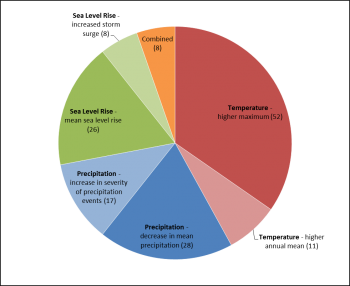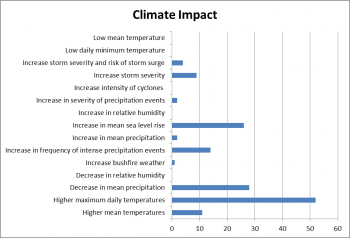More than 150 potential climate risks were identified and assessed as part of the strategic discussions’ risk assessment exercises. This assessment indicated that temperature was considered as having the highest proportion of significant risks, followed by precipitation then sea level rise. These are broken down in Figure 19 below, which provides further detail on the number of risk statements relating to each climate variable and impact.
The combined, or other, category of risk includes secondary climate effects such as increased bushfire risk and increased wind speeds associated with increased storms, etc.

Figure 19: Number of risk statements by climate variable and impact
As shown in Figure 20, the four most significant risks identified are as follows:
- An increase in extreme heat days
- A decrease in mean annual precipitation/rainfall
- An increase in sea level
- An increase in the frequency of intense precipitation events.
This does not indicate that these, and other climate effects not yet fully analysed, are not key future risks for the Region but rather that a key information gap exists. The lack of bushfire risk modelling incorporating future climate risk has been highlighted as a critical information gap.

Figure 20: Climate impacts
Risk assessment results
Key Regional sectors most at risk








